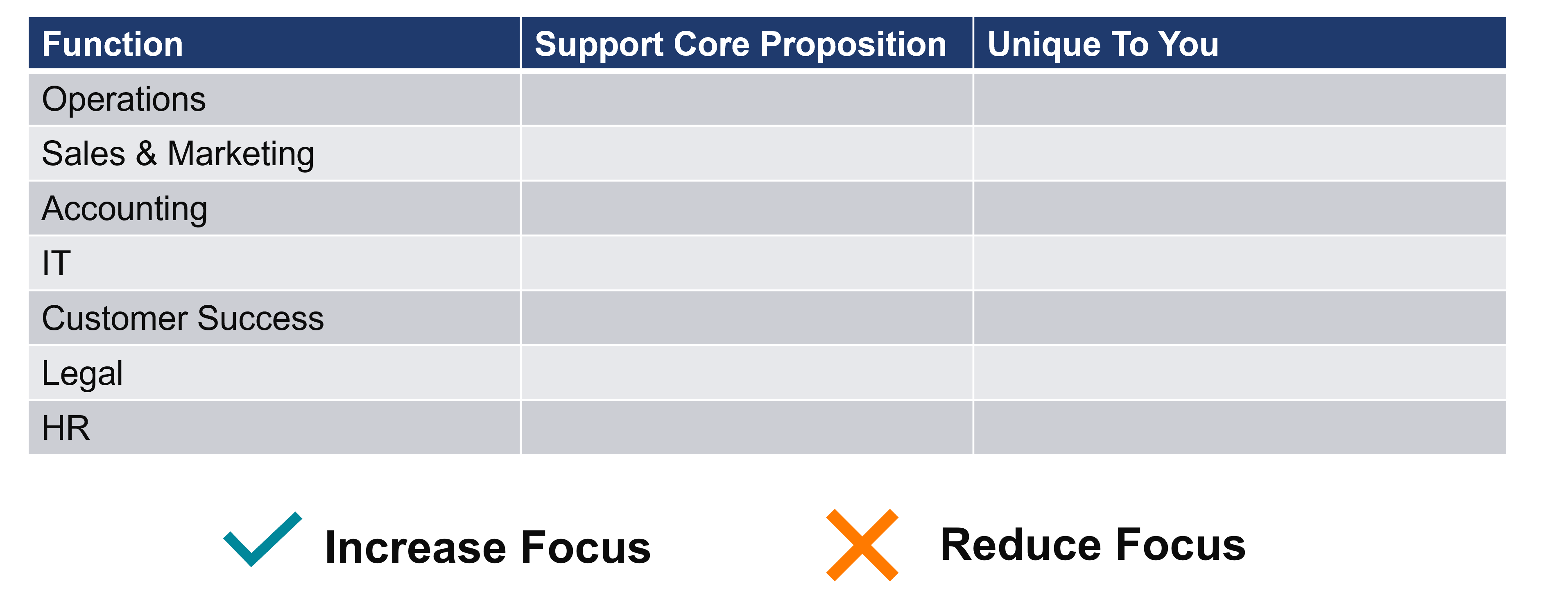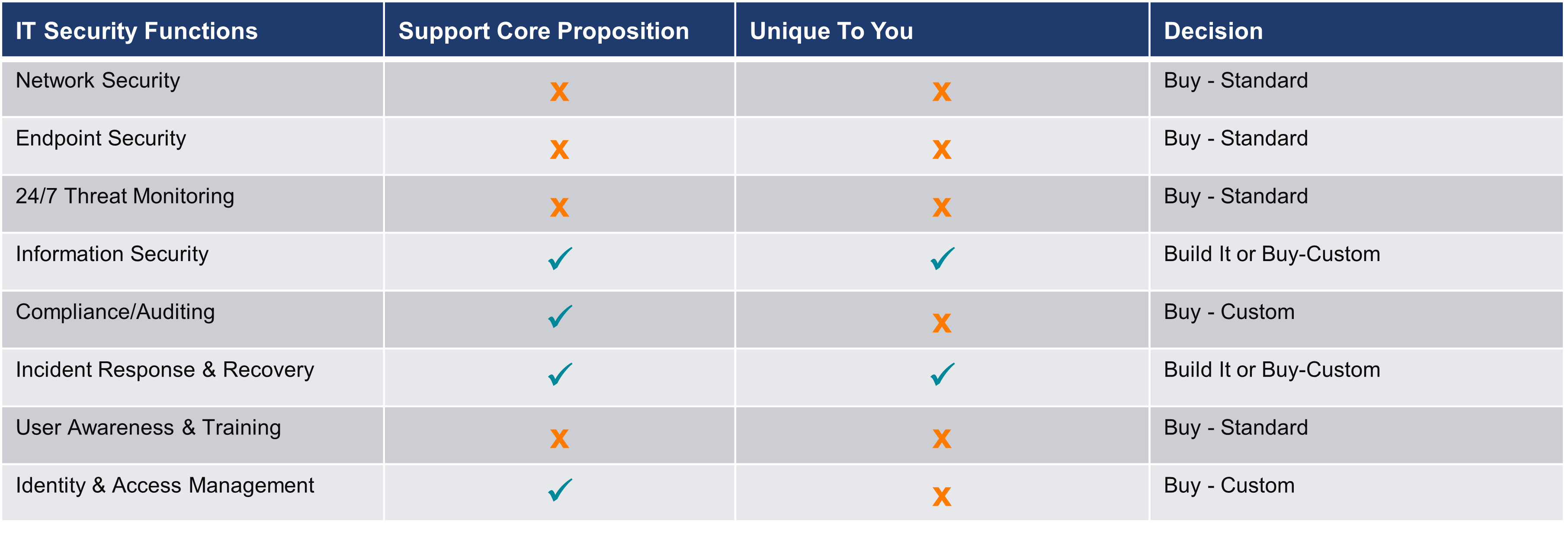Your resources are finite, and you need to make sure you’re investing your time and energy into the functions that enable your core value proposition. Don’t get bogged down by your back-office. While it’s important that your internet works and you pay your bills on time, those aren’t the things that will set you apart from your competitors.
We’ll teach you how to identify your core value proposition and optimize your business around it to improve your efficiency, profitability, and overall success.
How To Optimize Your Business Around Your Value Proposition
Step 1: Identify Your Value Proposition
What would you put on your billboard?

Identifying your value proposition for your business is about pinpointing the unique and compelling value your products or services offer to your target customers. It goes beyond simply describing what you do; it captures the specific benefits and advantages your business brings to the market.
Your core value proposition should clearly answer the question: “Why should customers choose your business over competitors?” This statement communicates the principle of your brand and acts as the foundation for your marketing and business strategies.
Step 2: Optimize Your Business Functions

Optimizing your business functions requires you to critically assess each function within your organization based on how it contributes to your core value proposition. An optimized business is agile;it can seize opportunities, overcome challenges, and consistently deliver value to customers and stakeholders.
How to Optimize Each Function
In order to optimize your business functions, you must evaluate them. When evaluating your business functions, ask yourself these two questions:
- Does this function support my core proposition?
- Does supporting this function need to be done in a way that is unique to my business?

For the functions that support your core value proposition, increase your investment and focus. For the functions that don’t, reduce the time and energy you spend on them. The second factor is whether or not this function is unique to your business. If it is, you’ll have to do it on your own or find a more expensive, custom solution. If it doesn’t support your core proposition and isn’t unique to your business, stop thinking about it!
You have three ways you can handle each business function – build it yourself, buy a custom solution, or buy an off-the-shelf product.

Based on how each function supports your core proposition, and how custom you need it to be – determine whether you will build or buy each function.

These tables are meant to provide a simple overview of your business functions, but we know that in reality things are much more complex. Each function has many sub-functions that you may have to treat differently. Here’s an example of how a typical business handles their IT sub-functions

By utilizing these tables, you can systematically assess each aspect of your organization’s functions. Tailor these tables to your specific business needs. Remember, the goal is to gain an understanding of your business functions, enabling you to make informed decisions and implement strategies that lead to enhanced efficiency and overall success.
Step 3: Become Agile
Now that you’ve optimized your business, you can become agile. Agile businesses are capable of seizing opportunities and navigating unexpected challenges with speed and efficiency.
3 Things you need to be agile
- Leadership must be aligned on core value proposition – Your leadership team needs to understand what the core value proposition is, and all be on the same page on how you’re working towards it. If your leadership team isn’t aligned, everyone will be pushing in different directions.
- You must understand your numbers and the levers in your business – If you want to expand into a new market, do you know what you must change across your business to make that happen. Or maybe times are tough, and you need to downsize, you need to know what you reduce without harming your business ability to deliver on its core proposition.
- Scalable technology and resources – Can your business support dynamic growth or change? Optimize your business and technology to enable agile decision making.

By embracing agility, companies can stay ahead of the competition, deliver products and services that resonate with customers, and create a dynamic environment that fosters creativity and growth.
Where Is Your Business?

Tangled
- Core Value Proposition isn’t clearly defined or agreed on by leadership
- Functions are done the way they’ve always been done; organic, not optimized
- Reacting to opportunities & threats based on gut feelings
On a Path
- Leadership is aligned on Core Value Proposition
- Optimizing some business functions based on CVP
- Using data to react opportunities & threats case-by-case
Agile
- Core Value Proposition is understood throughout organization
- Business is optimized to maximize execution of CVP
- Established risk management program enables quick, strategic decisions on opportunities & threats
Your business most likely be somewhere in the middle of tangled and agile. Some aspects of your business might be running smoothly, while others require improvement. By breaking down your core value proposition into its contributing elements, you can evaluate your current position and set your desired objectives. This process allows you to identify aspects that utilize resources without directly contributing to your core value proposition, enabling you to focus efforts on what truly matters.
Mastering winning back-office strategies and preparing for uncertainty are two indispensable pillars for any thriving and resilient business. Remember, uncertainty is not an obstacle but a chance to demonstrate your organization’s agility and creativity. As you implement these strategies, identify your objectives, and embrace change, your back-office will transform into a well-oiled machine that propels your business forward.
Watch the Full Webinar
Aldridge partnered with Doeren Mayhew to bring you a webinar to help you to learn how to become more agile & scalable during times of uncertainty. Watch the full webinar now [Webinar] Winning Back-Office Strategies






